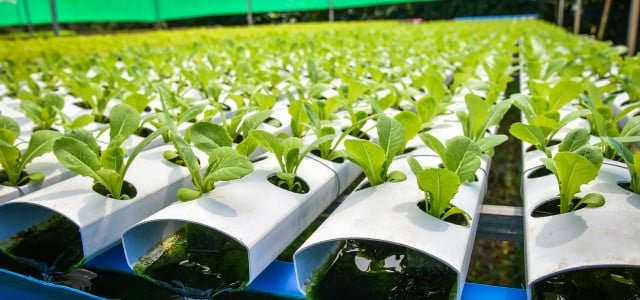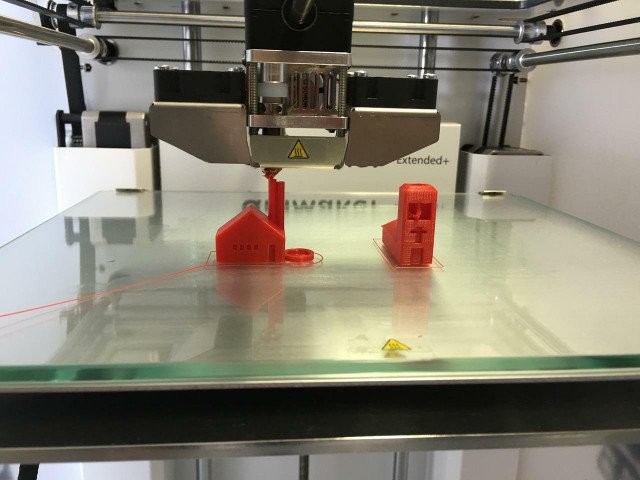Is food tech the technological future of food?

Food Tech merges the food industry with the technology sector. The concept aims to create a more sustainable food system with the help of technological innovations. You can find out more about the potential of food tech here.
The food industry and agriculture are facing a major challenge today: they have to feed a constantly growing world population - and this against the backdrop of the climate crisis, which is increasingly bringing with it heat, drought, continuous or heavy rainfall.
Food Tech aims to be the answer to this challenge. The term refers to technological innovations along the entire food value chain. Among other things, Food Tech aims to make the food industry more sustainable and to offer consumers innovative and healthy products.
What is Food Tech?

Food tech describes the merging of the food industry with the technology sector. Food tech companies use robotics, drones, artificial intelligence and 3D printing, for example. These technologies are a means to an end: they are intended to enable more efficient production processes that, for example, make the best possible use of resources, integrate more recycling and upcycling into food production and avoid food waste.
The overarching aim of food tech is therefore to create a more sustainable food system. The many problems in current food production show that this is urgently needed:
Environmental destruction: the global appetite for meat is destroying South American rainforests. The reason for this is that soy is grown on a massive scale to feed animals on land for which millions of hectares of forest have to be cleared. In Southeast Asia, tropical forests are shrinking due to palm oil cultivation. Rainforests are important carbon reservoirs. Coastal biotopes are also under threat, especially due to massive shrimp farming.
Global warming: It takes a lot of energy to produce, store, process and transport food. This results in a poor CO2 balance: one third of greenhouse gas emissions can be attributed to global food production. The production of animal-based food causes 57 percent of greenhouse gases, plant-based food 29 percent. Products such as rubber and cotton account for the remaining 14 percent.
Food waste:
Worldwide, around 1.3 billion tons of food end up in the garbage can every year instead of being eaten. In Germany alone, this amounts to twelve million tons. At the same time, up to 811 million people in the world go hungry.
To solve these problems, Food Tech focuses on the entire food value chain. This is why Forward Fooding, a platform for innovative food production, defines food tech as "the emerging sector that explores how technology can be used to achieve efficiency and sustainability in the planning, production, selection, delivery and consumption of food."
Food tech: two examples with great potential

Artificial intelligence, for example, offers great potential for innovation in the food industry. A project at Augsburg University of Applied Sciences is researching how this can reduce food waste.
The project uses artificial intelligence during the production process, particularly in the dairy, meat and baked goods industries. The perishable nature of these products means that considerable amounts of food are quickly wasted. AI should be able to forecast the demand for such products more accurately so that overproduction can be avoided. The researchers are aiming to reduce food waste by up to 90 percent.
In the near future, not only could objects be digitally modeled on a computer and then produced layer by layer using a 3D printer, but also more and more of our food. Scientists have been working on this idea, which also offers opportunities for greater sustainability, for almost 15 years.
In the future, 3D food printers could "print" meat from artificially cultivated cell tissue without animal suffering. Alternative food and protein sources such as insects could also be given more visually appealing forms thanks to 3D printing. Back in 2014, researchers showed how new foods can be formed from insect meal and other ingredients using a 3D printer. You can read more about what we could eat instead of meat in the future here: Alternatives to meat: what is the meat of the future?
However, less adventurous approaches that can give new shapes to ordinary foods such as chocolate, pasta dough and fruit jelly or marzipan are the most advanced. The German start-up Print4Taste has been working on 3D food printing since 2014 and now offers a 3D chocolate printer.
The potential of a 3D food printer to produce particularly individualized food is also interesting for the healthcare sector. From 2012 to 2015, the EU therefore funded a project that uses 3D printing to produce food that is tailored to the individual nutritional needs of older people and people with chewing and swallowing difficulties. The 3D printer will also make it possible to better control the nutritional content of food: Cooked and pureed food can be enriched with additional vitamins, minerals and trace elements before "printing".
Food tech start-ups from Germany

Food Tech is well represented in the German startup scene - including innovations in the areas of vertical farming and so-called "nutraceuticals", foods with health-promoting effects.
Infarm
The Berlin startup Infarm produces modular growing cabinets that enable organic herbs and vegetables to be grown directly in restaurants or supermarkets. This means the products are particularly fresh. The company grows its own seedlings from organic seeds, which then find optimal conditions for further growth in the cupboards. The technological equipment of the growing modules allows light, moisture and nutrients to be monitored and controlled digitally.
A cooperation between Infarm and the furniture manufacturer IKEA was recently announced.
yfood
yfood is one of the numerous food tech companies that want to combine functionality with growing nutritional awareness. They offer so-called “Complete Meals”: drinking meals, drinking powders and bars that are supposed to be nutritionally balanced, healthy and tasty at the same time. Such “Complete Meals” should be able to replace entire conventional meals in a practical way.
However, the concept is not really innovative. So-called “astronaut food” in the form of dishes compressed into pastes, bars and press cubes first appeared on the table for astronauts in space in the 1960s. The idea of replacing meals with shakes and powders then also found favor among the general population. They were often marketed with the prospect of losing weight quickly through such food. You can read here why a diet with drinking food doesn't make sense: Drinking meals: Why that's not a good idea.
yfood is also facing criticism from nutrition experts. These refer, among other things, to a high sugar content and a too low calorie content of the drinking food. Food tech innovations are therefore not always automatically healthier, and they also produce a lot of packaging waste.
Agrilution
The startup Agrilution is pursuing a similar concept to Infarm, but for your own home. There you can have the “Plantcube” developed by the company installed. This is a digitalized growing cabinet that provides ideal conditions for growing fresh salads, herbs and microgreens in your own home. The associated app displays temperature and humidity, controls them if necessary and also reports when the vegetables are ready to harvest.

One thing is clear: the food industry cannot continue as before. It is fueling the climate catastrophe and destroying the environment - and thus also its own basis for safely supplying the world's population with high-quality and healthy food.
The fact that food tech is currently booming is reason for hope. Technologicalization and digitalization have already produced promising approaches that can, for example, reduce food waste and make alternative foods more accessible.
But some food tech innovations only make limited sense: Instead of eating drinking food packaged in plastic, it is more sustainable and cheaper to eat as many seasonal, locally sourced plant-based foods as possible. Developments that make gardening within your own four walls easier can actually be helpful.
Conclusion: Is food tech the future of food?
More on this topic
https://medium.com/@StorySculptres/how-to-get-the-most-out-of-my-profile-6cb9e69ec59f
Yours Forevermore
